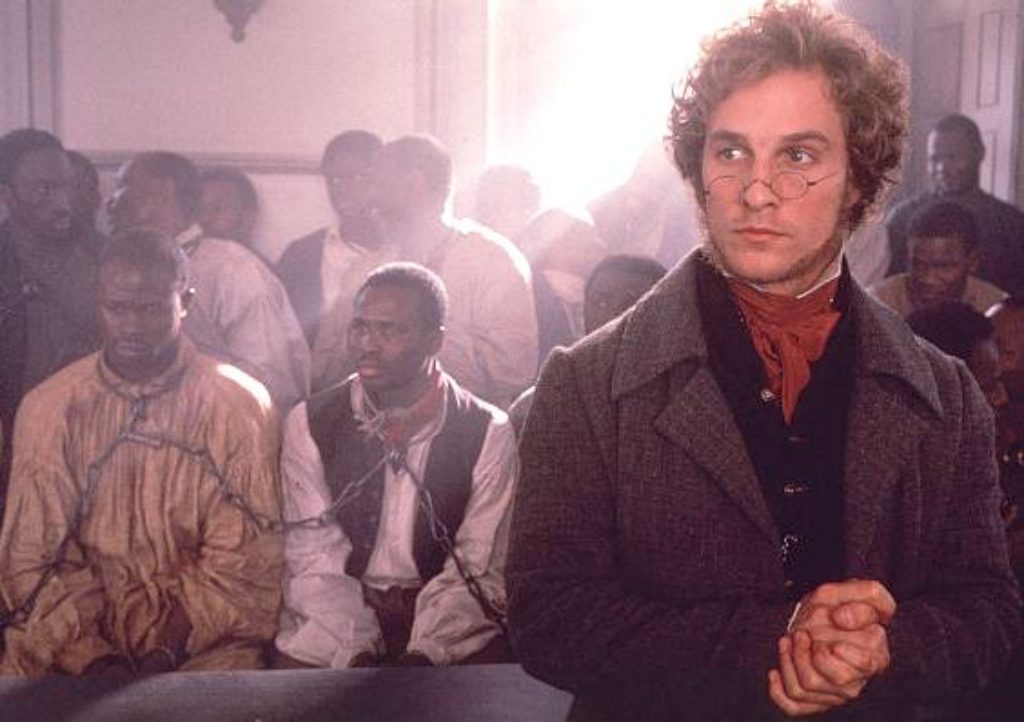
The year is 1839. A group of 53 Africans held captive on the slave ship La Amistad break free of their shackles, arm themselves and forcibly take control of the ship. They want to go back to Africa, but find that they are tricked when they are captured again by an American naval ship off Long Island. The Africans are then imprisoned on the charge of murder and piracy. The remainder of the three and one quarter hour film describes their court battle for freedom. Defended at first by Baldwin, and then ultimately before the Supreme Court by John Quincy Adams, the Africans reclaim their freedom. The fight is viscous and long. Even worse, the language barrier retards their lawyer’s efforts for quite some time. Once that barrier is eliminated, progress begins.
Positive Elements: Viewing this film permanently changes a person’s perception of slavery. Especially that of early American slavery and slave trading. A clear message celebrates every man’s unique value. Human life is shown to have great value, regardless of race. The brutality perpetrated against the slaves is shown as inexcusable and vile. In addition, the story of Jesus’ life, death and resurrection is shown in lingering detail via a picture Bible acquired by Cinque, the leader of the captured Africans. When John Quincy Adams presents his case to the Supreme Court, he calls on them to recognize “right” and “wrong.” They do so. When Cinque is forced to kill during the mutiny, a close-up of his face reveals that he does not kill for fun, or even revenge, but to live. His revulsion, remorse and terror are notably portrayed in his expression. This is not senseless violence, but it is extremely graphic in portrayal.
Spiritual Content: At one point, Cinque remarks that Christ lost his battle (because he died), but it is noted that He was without sin. Salvation is not the object of the lesson on Christ’s life.
Sexual Content: Several scenes include brief but explicit scenes of full-frontal nudity involving men and women. A dark scene on the deck of the ship may also involve sexual assault, but those images are difficult to see clearly.
Violent Content: A twisting sword through a chest is shown under the flashing glare of nighttime lightning. A line of 50 slaves (including women and children) are tied together and drug overboard in the middle of the sea by a weight of refuse. They scream and flail as they cascade over the side of the ship.
Crude or Profane Language: The word “h—” is used once as an expletive.
Other Negative Elements: President Martin Van Buren drinks Brandy.
Summary: An important film as it relates to the American cultural landscape. At least as important, if not more so, than Schindler’s List. That said, both films include graphic violence and nudity. This film is not for children, or even most teens. And many adults may find the realistic depictions of violence and degradation here very difficult to watch as well.